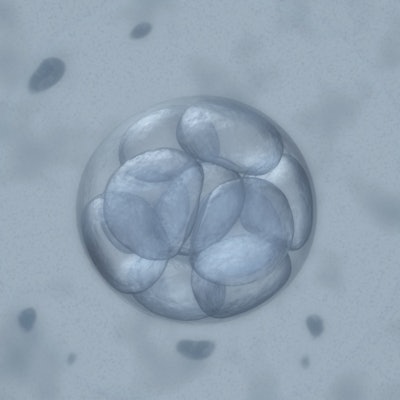
This week’s haul features stories about a paralyzed man who regained control of his fingers with a brain implant and the power of his thoughts, a drone-like helicopter that can fly humans and a journey into the center of the mysterious ninth planet. Oh, yes, and someone also found a Loch Ness monster.
Paralyzed Man Plays Video Game, Swipes Credit Card With The Power Of His Thoughts
 Ian Burkhart, 24, never thought he would sweep a credit card again. “Burkhart was paralyzed from the shoulders down after a diving accident in 2010, but regained functional use of his hand through the use of neural bypass technology.” (Image credit: The Ohio State University Wexner Medical Center via GE Reports)
Ian Burkhart, 24, never thought he would sweep a credit card again. “Burkhart was paralyzed from the shoulders down after a diving accident in 2010, but regained functional use of his hand through the use of neural bypass technology.” (Image credit: The Ohio State University Wexner Medical Center via GE Reports)A man paralyzed from the neck down after a diving accident used a brain implant to regain control of his fingers with just the power of his thoughts. The device allowed him to swipe a credit card and play a guitar video game. The feat took place at Ohio State University’s Wexner Medical Center. “This electronic neural bypass for spinal cord injuries reconnects the brain directly to muscles, allowing voluntary and functional control of a paralyzed limb by using his thoughts,” the team wrote in a media release.
The brain implant, called NeuroLife, was invented at Battelle, an Ohio innovation and technology center. “It’s amazing to see what he’s accomplished,” said Nick Annetta, electrical engineering lead for Battelle’s team on the project. “Ian can grasp a bottle, pour the contents of the bottle into a jar and put the bottle back down. Then he takes a stir bar, grips that and then stirs the contents of the jar that he just poured and puts it back down. He’s controlling it every step of the way.”
Of Embryonic Cells From Mice and Man
 An image of a human embryo. (Image credit: Getty Images via GE Reports)
An image of a human embryo. (Image credit: Getty Images via GE Reports)Researchers at Karolinska Institutet and the Ludwig Cancer Research in Sweden used molecular analysis to study the first week of development of embryonic cells from donated human embryos. They found “considerable differences in embryonic development between humans and mice,” including gene expression on the X chromosome. This may not sound like a big deal, but mice embryos are the most common substitute for human cells in the field and have supplied much of our knowledge about that stage of human development. The team discovered that three key types of embryonic cells “seem to mature more simultaneously in the human than in the mouse.”
“The fundamental knowledge generated by our research doesn’t only help us understand embryonic development better, it also tells us more about how pluripotent cells are formed and regulated in its early stages,” says Fredrik Lanner, assistant professor at the Department of Clinical Science, Intervention and Technology. “This is important for the use of embryonic stem cells in regenerative medicine.”
Taking The Wraps Off Mysterious Planet 9
 Planet 9’s simulated structure. (Image credit: Esther Linder, Christoph Mordasini, University of Bern via GE Reports)
Planet 9’s simulated structure. (Image credit: Esther Linder, Christoph Mordasini, University of Bern via GE Reports)Scientists at the University of Bern are trying to get to the bottom of Planet 9. No, not you, Pluto, but a new celestial body hypothesized by astronomers Chadwick Trujillo and Scott Sheppard. In 2014, the pair reported it had detected a gravitational tug caused by the planet, which they said is located inside the Oort cloud, the cosmic refrigerator storing ice and rock at the edge of the solar system. The Bern team recently used planetary evolution simulations to propose that “Planet 9 has the same basic structure as Uranus and Neptune” and also that “it might be an ejected failed giant planet core” almost four times as large as Earth. “This is wrapped in a silicate mantel followed by a possible water ice layer and finally a [hydrogen/helium] envelope,” they wrote.
The Drone Grows Up
The people at the German aircraft company e-volo have successfully completed the maiden flight the world’s first “multicopter.” Called Volocopter VC200, the machine is a drone-like helicopter powered by 18 electrical propellers that can carry two people. The company says the machine’s applications range from human transportation to “precision” agriculture, search-and-rescue and freight.
A Loch Ness Monster Found!
 Kongsberg’s survey uncovered the remains of the Loch Ness monster model resting on a crest on the bottom of the loch, some 180 metres deep. (Image credit: Kongsberg Maritime via GE Reports)
Kongsberg’s survey uncovered the remains of the Loch Ness monster model resting on a crest on the bottom of the loch, some 180 metres deep. (Image credit: Kongsberg Maritime via GE Reports)Using a torpedo-like underwater robot equipped with high-tech sonar, engineers from Norwegian company Kongsberg Maritime found a Loch Ness monster resting on the bottom of the Scottish lake. But it wasn’t the real thing. The robot had discovered a movie prop used during filming the 1970 movie “The Private Life of Sherlock Holmes.” The prop had sunk and remained lost in the Loch’s 180-meter deep trench. Until this week. Kongsberg has been surveying the lake since 1987. “Over the years, the company has returned many times, bringing the latest technology to uncover the Loch’s mysteries,” said Craig Wallace, the company’s senior subsea applications engineer.





















